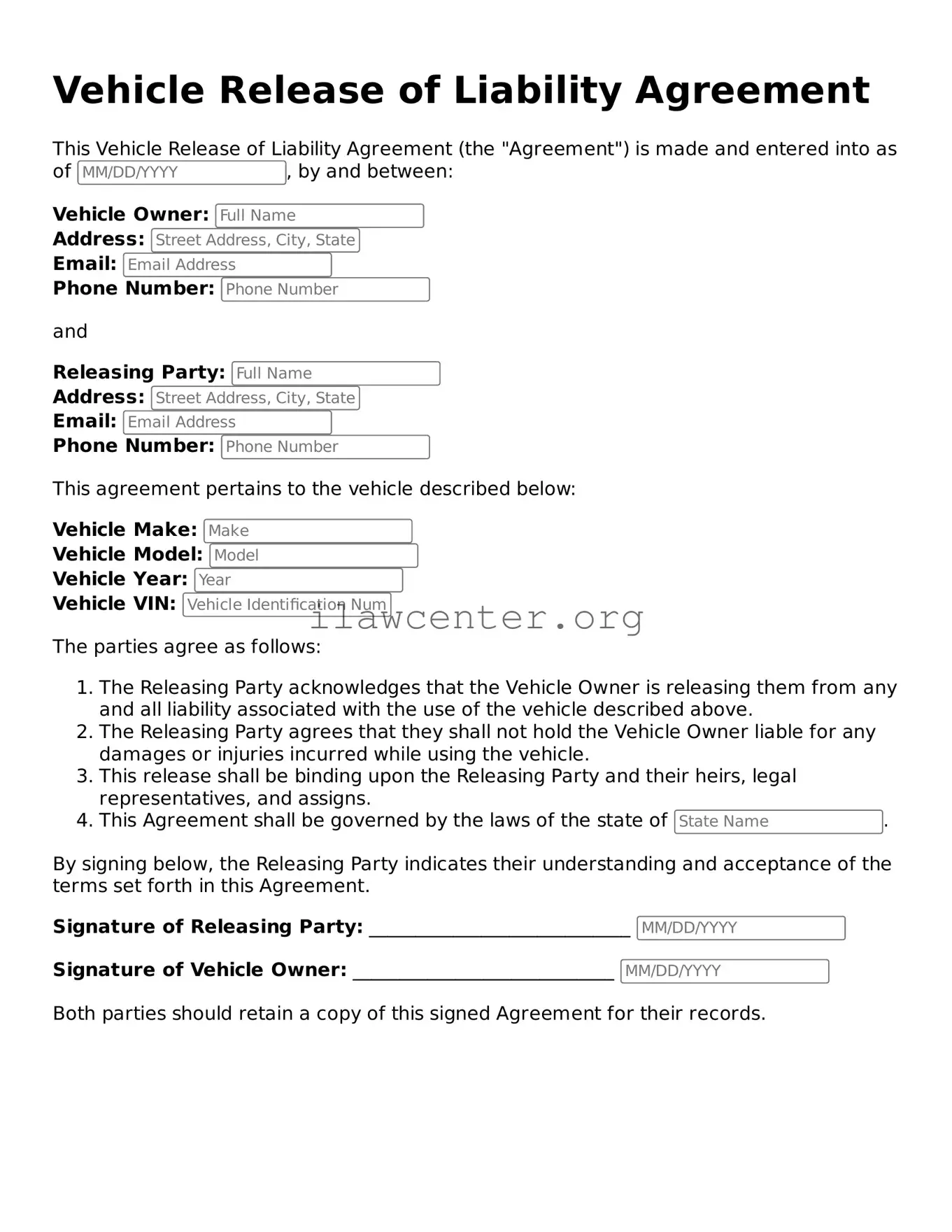Instructions on Utilizing Vehicle Release of Liability
After you have obtained the Vehicle Release of Liability form, filling it out correctly is essential to ensure that all parties are clear on the details. Following the steps below will help you accurately complete the form and facilitate a smooth process.
- Begin by entering the date at the top of the form.
- In the first section, fill in your name and contact information, including your phone number and address.
- Next, provide information about the vehicle involved. This includes the make, model, year, and Vehicle Identification Number (VIN).
- Indicate the name of the person or entity to whom the vehicle is being released.
- Include the date of the vehicle release. Make sure this aligns with the intended release of liability.
- In the final section, both you and the person receiving the vehicle should sign and print your names to validate the document.
Once the form is completed, make sure to retain a copy for your records. This will serve as proof of the release and may be necessary for any future inquiries related to the vehicle.
